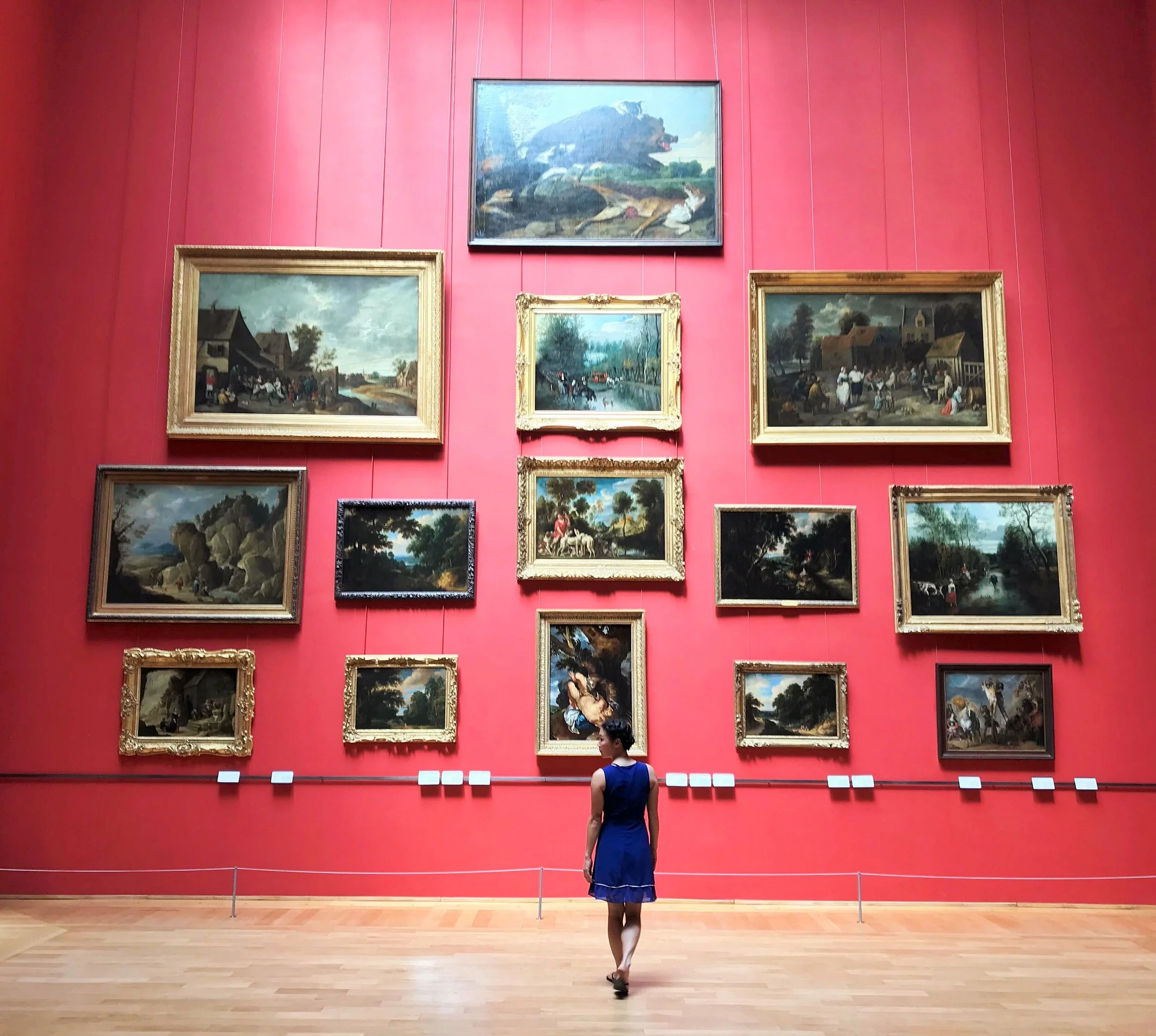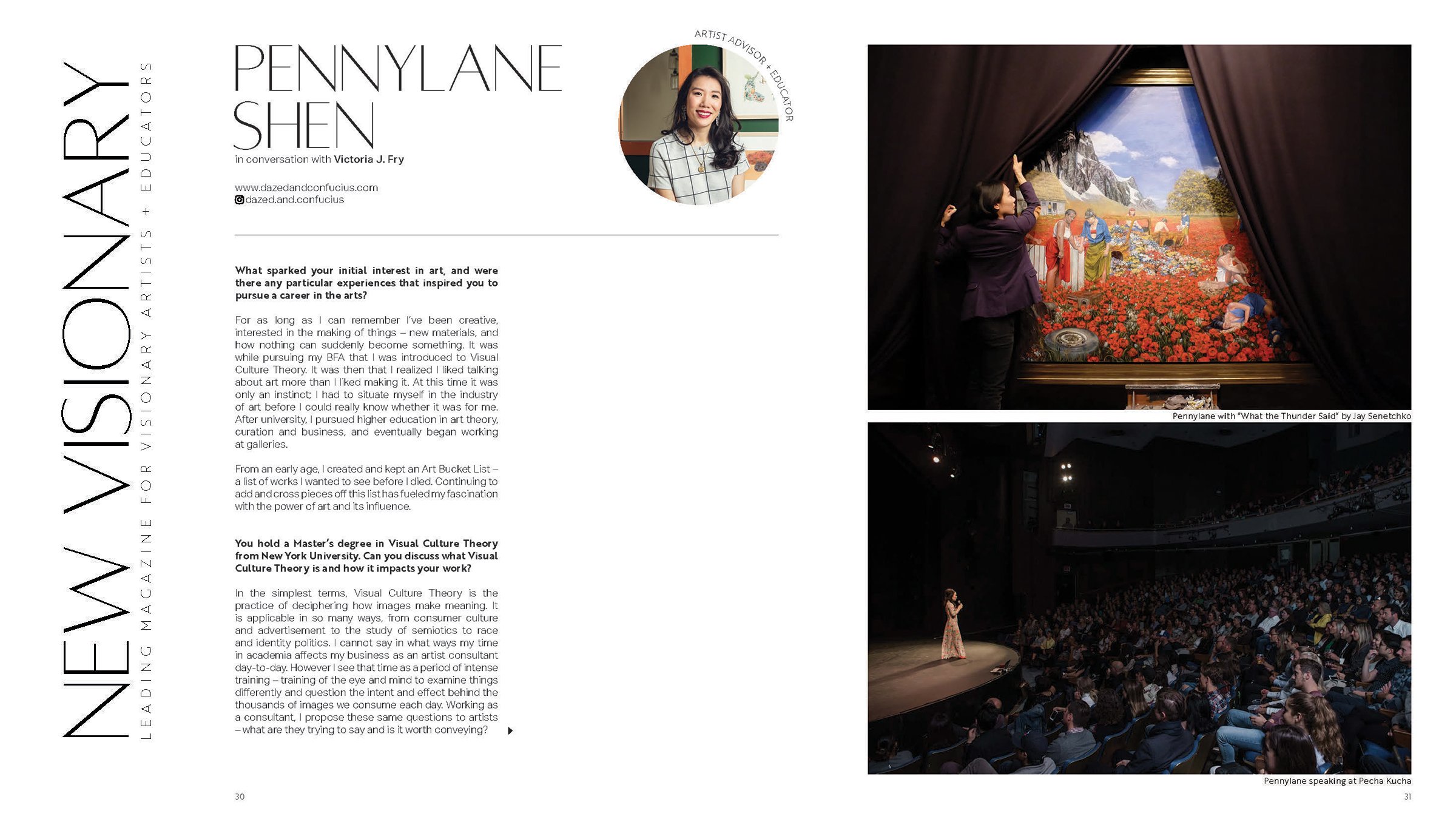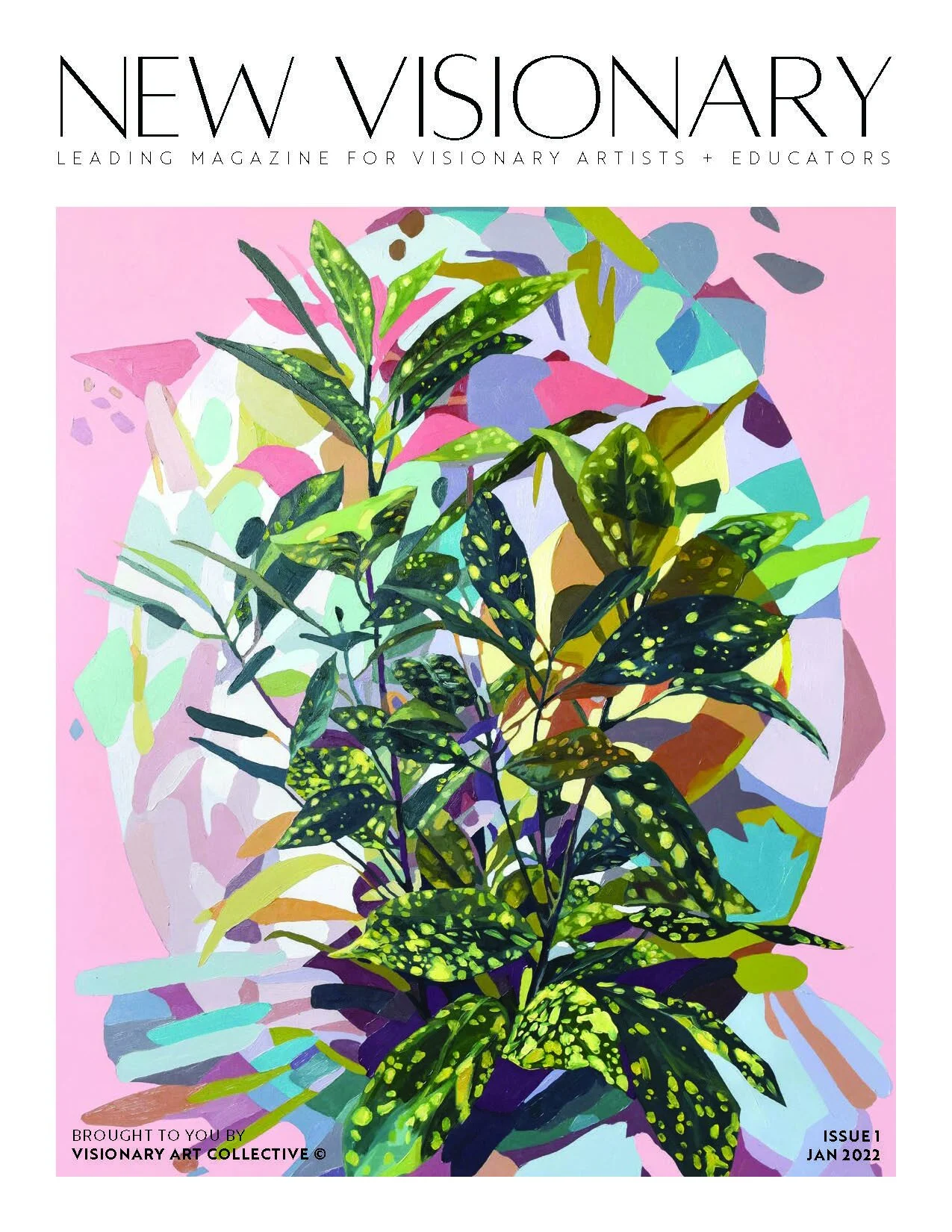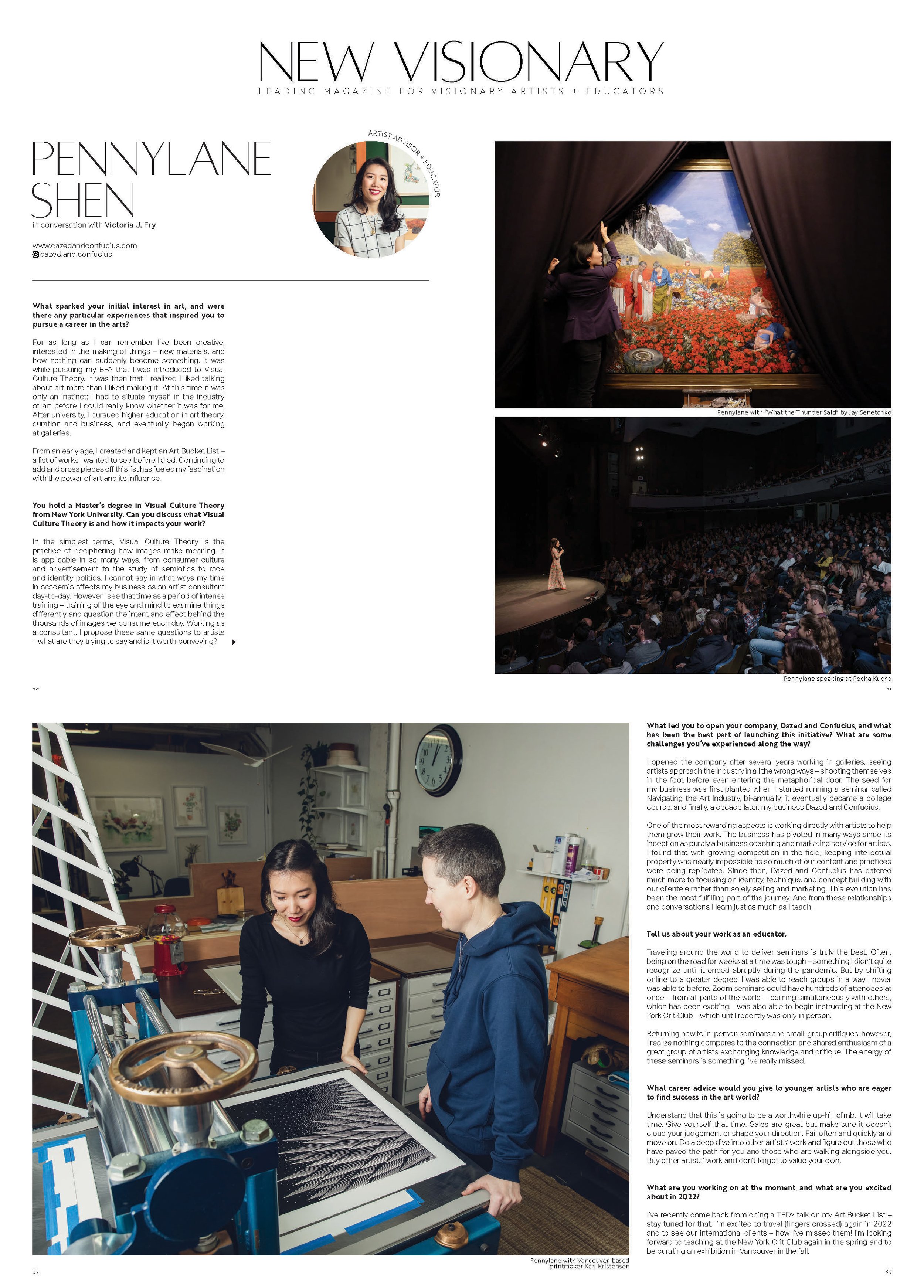New Visionary - Leading Magazine for Visionary Artist + Educators
Read Pennylane’s interview below.
Visit Visionary Art Collective or Amazon to get your copy.
PENNYLANE SHEN
in conversation with Victoria J. Fry
What sparked your initial interest in art, and were there any particular experiences that inspired you to
pursue a career in the arts?
For as long as I can remember I’ve been creative, interested in the making of things – new materials, and how nothing can suddenly become something. It was while pursuing my BFA that I was introduced to Visual Culture Theory. It was then that I realized I liked talking about art more than I liked making it. At this time it was only an instinct; I had to situate myself in the industry of art before I could really know whether it was for me. After university, I pursued higher education in art theory, curation and business, and eventually began working at galleries.
From an early age, I created and kept an Art Bucket List – a list of works I wanted to see before I died. Continuing to add and cross pieces off this list has fueled my fascination with the power of art and its influence.
You hold a Master’s degree in Visual Culture Theory from New York University. Can you discuss what Visual Culture Theory is and how it impacts your work?
In the simplest terms, Visual Culture Theory is the practice of deciphering how images make meaning. It is applicable in so many ways, from consumer culture and advertisement to the study of semiotics to race and identity politics. I cannot say in what ways my time in academia affects my business as an artist consultant day-to-day. However I see that time as a period of intense training – training of the eye and mind to examine things differently and question the intent and effect behind the thousands of images we consume each day. Working as a consultant, I propose these same questions to artists– what are they trying to say and is it worth conveying?
What led you to open your company, Dazed and Confucius, and what has been the best part of launching this initiative? What are some challenges you’ve experienced along the way?
I opened the company after several years working in galleries, seeing artists approach the industry in all the wrong ways – shooting themselves in the foot before even entering the metaphorical door. The seed for my business was first planted when I started running a seminar called Navigating the Art Industry, bi-annually; it eventually became a college course, and finally, a decade later, my business Dazed and Confucius.
One of the most rewarding aspects is working directly with artists to help them grow their work. The business has pivoted in many ways since its inception as purely a business coaching and marketing service for artists. I found that with growing competition in the field, keeping intellectual property was nearly impossible as so much of our content and practices were being replicated. Since then, Dazed and Confucius has catered much more to focusing on identity, technique, and concept building with our clientele rather than solely selling and marketing. This evolution has been the most fulfilling part of the journey. And from these relationships and conversations I learn just as much as I teach.
Tell us about your work as an educator.
Traveling around the world to deliver seminars is truly the best. Often, being on the road for weeks at a time was tough – something I didn’t quite recognize until it ended abruptly during the pandemic. But by shifting online to a greater degree, I was able to reach groups in a way I never was able to before. Zoom seminars could have hundreds of attendees at once – from all parts of the world – learning simultaneously with others, which has been exciting. I was also able to begin instructing at the New York Crit Club – which until recently was only in person.
Returning now to in-person seminars and small-group critiques, however, I realize nothing compares to the connection and shared enthusiasm of a great group of artists exchanging knowledge and critique. The energy of these seminars is something I’ve really missed.
What career advice would you give to younger artists who are eager to find success in the art world?
Understand that this is going to be a worthwhile up-hill climb. It will take time. Give yourself that time. Sales are great but make sure it doesn’t cloud your judgement or shape your direction. Fail often and quickly and move on. Do a deep dive into other artists’ work and figure out those who have paved the path for you and those who are walking alongside you. Buy other artists’ work and don’t forget to value your own.
What are you working on at the moment, and what are you excited about in 2022?
I’ve recently come back from doing a TEDx talk on my Art Bucket List – stay tuned for that. I’m excited to travel (fingers crossed) again in 2022 and to see our international clients – how I’ve missed them! I’m looking forward to teaching at the New York Crit Club again



